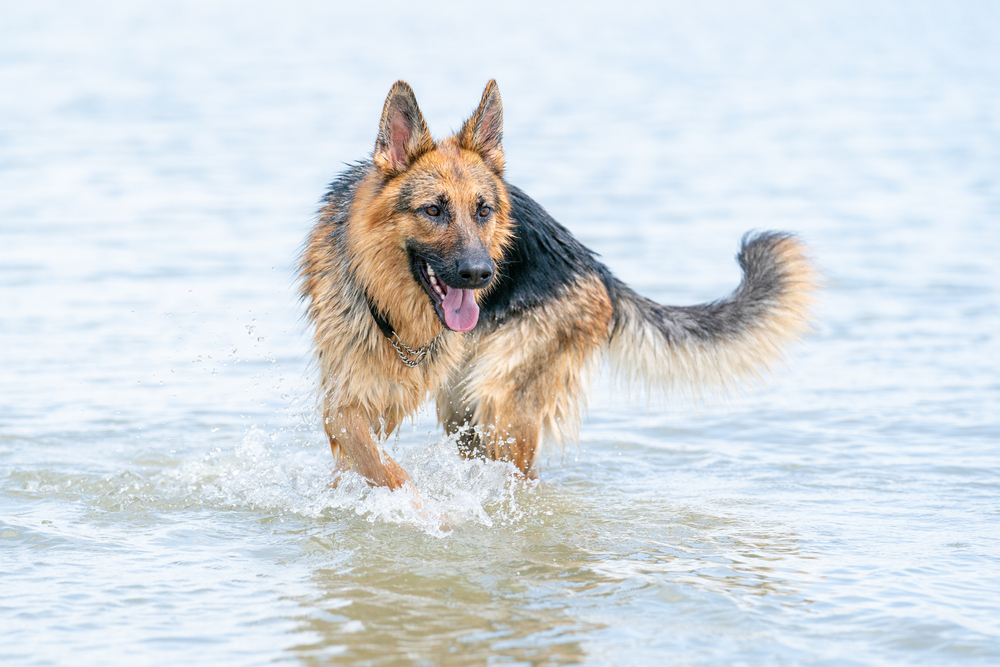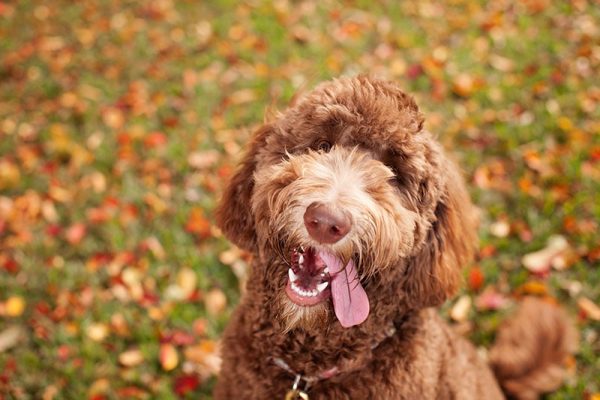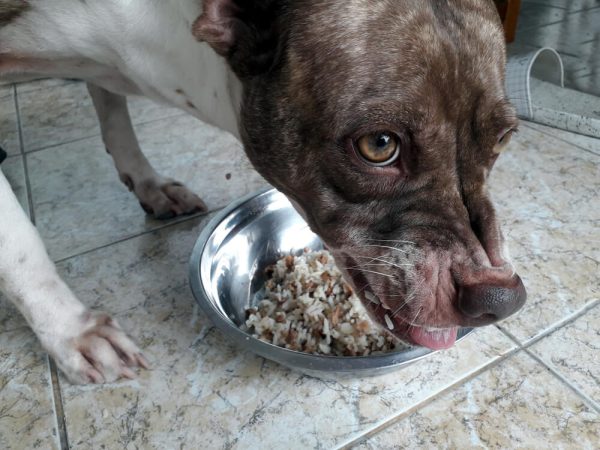In this article
Brave, loyal, obedient, and affectionate are words that are often associated with the German Shepherd dog (GSD). As their name suggests, these striking dogs were originally bred in the late 1800s for the purpose of herding livestock. As the demand for herding dogs reduced over the 20th Century, these highly intelligent and trainable dogs became popular family pets, guard dogs, and the top breed of choice for police and military work.
Throughout the late 1900s, a divergence appeared within the breed, separating the working-type Shepherd from the pet or show-type Shepherd, with the latter developing numerous musculoskeletal abnormalities as a result of breeding selection based on appearance over function, while the working-type dogs maintained the more functional form of their origins. The sloping back that became the breed standard brought with it numerous health problems, which are fortunately now being selected against, but these problems are likely to plague the genetics of these beautiful dogs for many generations to come.
Let’s take a look at 14 common German Shepherd health issues to be aware of and how you can ensure your pup is the healthiest they can be.

The 14 Common German Shepherd Health Issues to Be Aware Of
Musculoskeletal Problems
1. Hip and Elbow Dysplasia
What started with the preferential breeding of dogs with a gently sloping back over time created a GSD breed standard that favored an almost hunched appearance. This misguided breeding predisposed these once-athletic canines to extremely poor hip and elbow conformation, which is reflected in the high incidence of hip and elbow dysplasia in the breed. This leads to mobility issues, abnormal wear on the joints, pain, and arthritis.
Depending on the severity of dysplasia, surgery may be required to correct the joint deformation. Mild cases should be kept at a lean body weight and placed on supplements to help support joint cartilage.
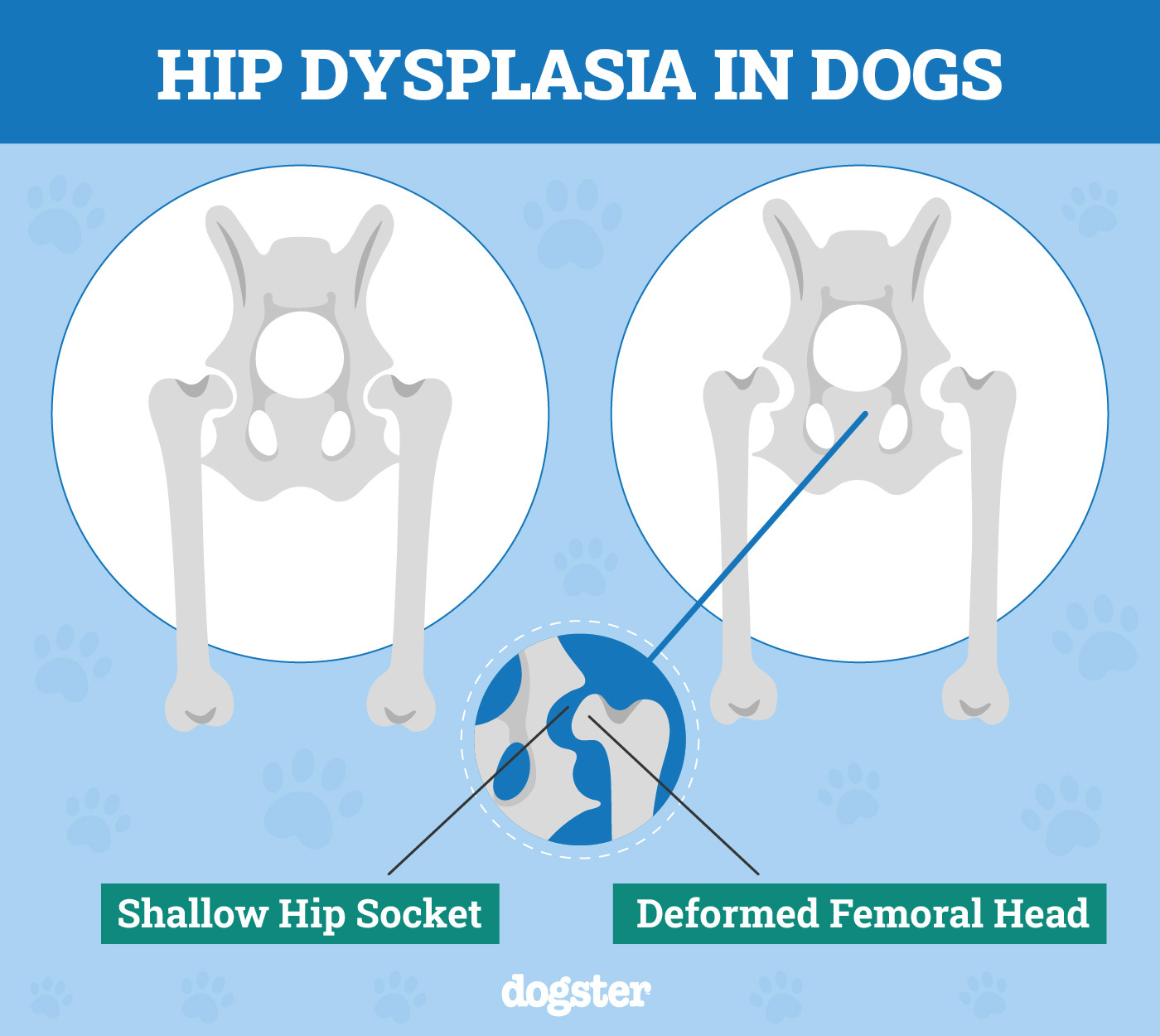
2. Osteoarthritis
Like most large dog breeds, the GSD has a high likelihood of developing osteoarthritis at some stage of their life. If they have predisposing issues like joint dysplasia, they may develop arthritis within the first few years of life. Early intervention, weight management, and correction of major joint abnormalities are the best ways to help delay or prevent the onset of this painful condition.
3. Canine Degenerative Myelopathy (DM)
Formerly known as chronic degenerative radiculomyelopathy (CDRM), this is a genetic disease that affects the spinal cord, causing progressive muscle wastage, incoordination, and eventual paralysis.
There is no cure for the condition, with treatment usually consisting of:
- Physiotherapy, including hydrotherapy
- Maintaining a lean body condition
- Addressing any other potential mobility issues like arthritis
- Mobility aids such as ramps, floor mats, slings, and wheelchairs
DM progresses quite rapidly, and most dogs diagnosed with this disease are eventually euthanized for humane reasons. There is a genetic test available that can identify carriers of the problematic gene, allowing them to be removed from the breeding pool.
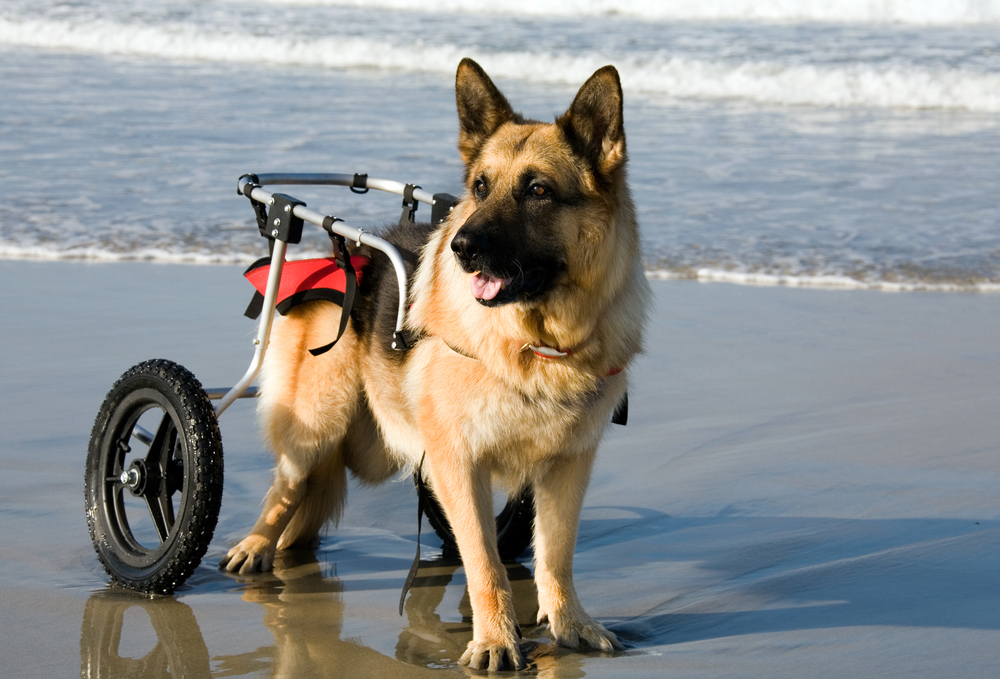
4. Panosteitis
Panosteitis is the technical term for growing pains, and it is a condition that commonly affects rapidly growing large dog breeds. It is the inflammation and pain caused by the accelerated growth of the long bones, generally seen in dogs between the ages of 2 to 3 months and 18 to 24 months. Some dogs will experience pain in all four limbs at different times, some may only suffer in a single leg, and other dogs aren’t affected at all. Most dogs will recover quickly with rest, but some need anti-inflammatory pain relief to help them get past this uncomfortable period.
5. Osteochondritis Dissecans (OCD)
Lameness and stiffness in a growing dog may also be due to this condition, where a flap of cartilage lifts, causing a painful lesion within the joint. The underlying cause of this condition is not well understood, but large and giant breed dogs, including the GSD, Great Danes, Bernese Mountain Dogs, and Golden Retrievers are most commonly affected.
Mild cases in dogs less than 6 months old may be successfully managed with medication and rest, but in the majority of cases, surgery is required to remove the flap. Without treatment, the joint will undergo inflammation and arthritic changes, leading to painful lifelong consequences.

Gastrointestinal Problems
6. Exocrine Pancreatic Insufficiency (EPI)
- Endocrine pancreas: Responsible for insulin production and blood glucose management.
- Exocrine pancreas: Produces digestive enzymes that are largely responsible for breaking down food to allow the absorption of nutrients from the small intestine.
Dogs with EPI do not produce enough of these digestive enzymes, leading to poor absorption of nutrients and resulting in severe diarrhea and weight loss. The vast majority of cases are seen in German Shepherds, suggesting that the condition has a genetic component. EPI is rarely curable but can be effectively managed by supplementing the deficient enzymes.
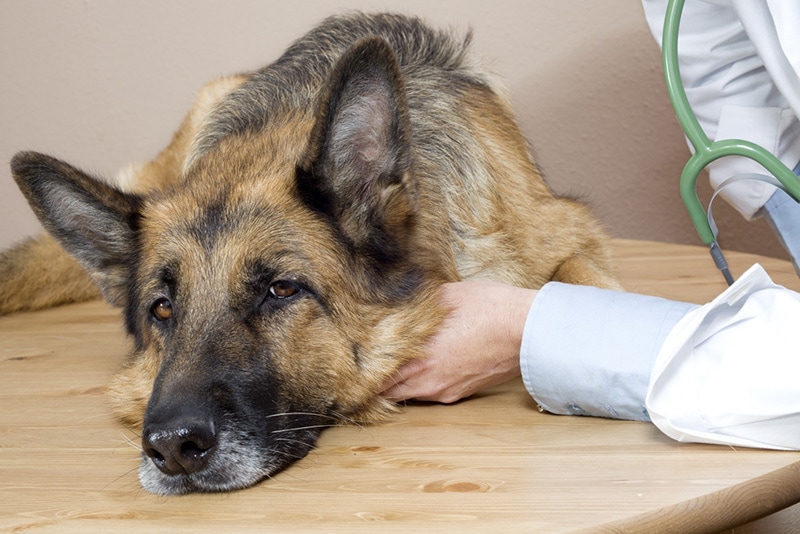
7. Diarrhea/IBD
In addition to EPI, the GSD breed has a relatively high incidence of chronic diarrhea caused by food intolerance, dietary indiscretion, and inflammatory bowel disease.
8. Gastric Dilatation and Volvulus (GDV)
This life-threatening condition is most common in large, deep-chested dogs. It occurs when the stomach becomes bloated and then twists, obstructing the digestive tract and compromising blood flow to the abdominal organs. Left untreated, the condition is invariably fatal.
- Eating meals shortly before or after exercise
- Aerophagia (gulping air when eating or drinking)
- Inflammatory bowel
- Splenic enlargement or tumors
- Raising food and water bowls to chest height
- No exercise within 2 hours of eating (before or after)
- Wetting dry food to prevent swelling in the stomach

Immune-Mediated Problems
9. Allergies/Atopy
Likely linked to their food sensitivities, the GSD also has a higher incidence of allergic skin disease. This may be due to allergies to food, pollens, plants, dust, or a combination of the above. It is sensible to have an itchy GSD undergo allergy testing and food trials in the early stages of the disease to get effective control before secondary infections set in.
10. Otitis
Despite their large, open canals and upright ears, GSDs often present to the vets with ear infections (otitis externa). As the pinnae (out part of the ear/ear flap) and canals are covered in skin, this is likely an extension of their skin sensitivity issues.
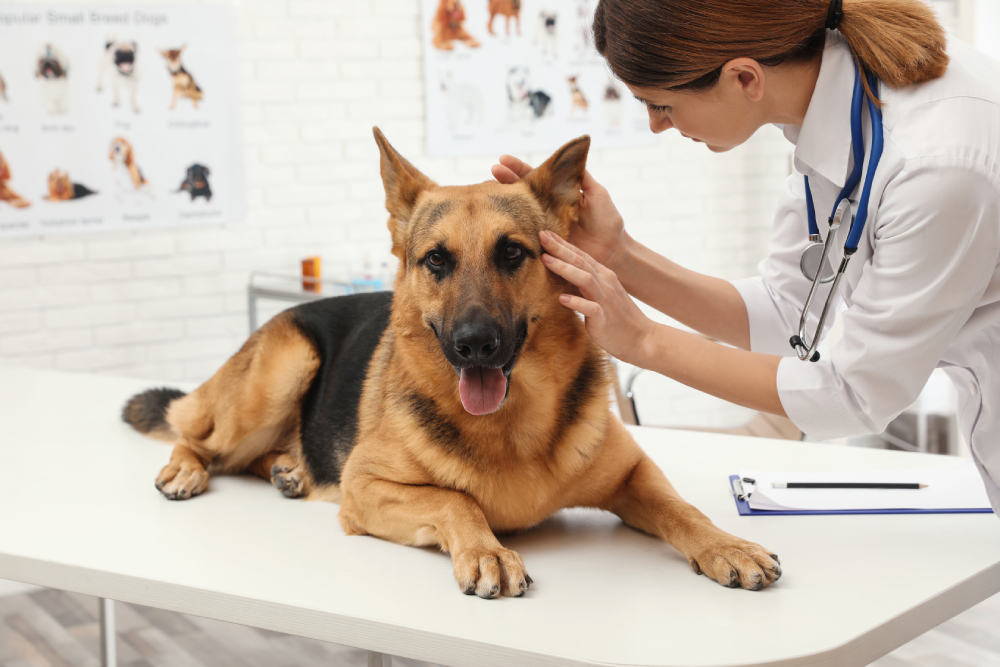
11. Pannus
A hereditary immune-mediated condition that mostly affects the GSD breed, pannus is the chronic inflammation and thickening of the cornea of the eye. Starting out as a pink, painful lesion and often mistaken for a corneal ulcer, pannus results in a dark, thickened lesion that can grow across the surface of the cornea. Early diagnosis and treatment can limit its spread, but left untreated, it can result in permanent blindness. Treatment involves lifelong topical steroids, with antibiotics needed if there is a secondary infection present.

Neoplasia (Cancer)
12. Osteosarcoma
Almost exclusively affecting large breed dogs, this malignant bone cancer is often a death sentence. Initially presenting as lameness, by the time a diagnosis is made, the cancer has often metastasized to other parts of the body, usually the lungs. Early diagnosis and amputation can be curative, so any acute lameness in a middle-aged GSD should be treated with suspicion.

13. Hemangiosarcoma
An aggressive and invasive vascular tumor, hemangiosarcoma accounts for around 60 to 70% of all canine spleen and heart tumors. They are insidious in nature, often going unnoticed until they rupture, resulting in significant, sometimes fatal, internal hemorrhage. Surgical removal can be curative, but much like with osteosarcoma, the primary tumor has often already spread to other organs by the time it is detected.

Behavior
14. Aggression
Being a popular guard, police, and military dog, you might think that the GSD has a natural inclination towards aggression, but this is not really the case. One of the reasons they are so successful in these roles is not due to a propensity to bite but their ability to be trained to bite and release on command.
However, as a highly intelligent, often hypervigilant dog, the GSD needs a strong leader, structured training, and plenty of stimulation to keep them from becoming frustrated and destructive. They can also be quite anxious, and in the wrong hands, these traits can result in a fearful, reactive, and aggressive dog.

How We Can Help Manage and Reduce the Risks of Health Issues in Our German Shepherds
We can never guarantee the health of any dog we bring into our homes, and there are certain conditions that simply cannot be predicted or easily avoided. However, there are a few things you can do to minimize the risks of having a less-than-healthy pup.
1. Hip and Elbow Evaluation
All reputable GSD breeders should be able to show you proof of hip and elbow evaluation from both parents, preferably from previous generations too. Although this doesn’t guarantee trouble-free joints, it is one way that breeders and kennel clubs are trying to reduce the incidence of dysplasia.
2. View Both Parents
You should insist on being able to view and interact with both parents of a prospective puppy, and any reluctance to allow this should be seen as a red flag. This gives you the opportunity to assess the physical condition of the parents, as well as their temperament. Although behavior is not completely determined by genetics, it does have an influence on the temperament of the offspring.
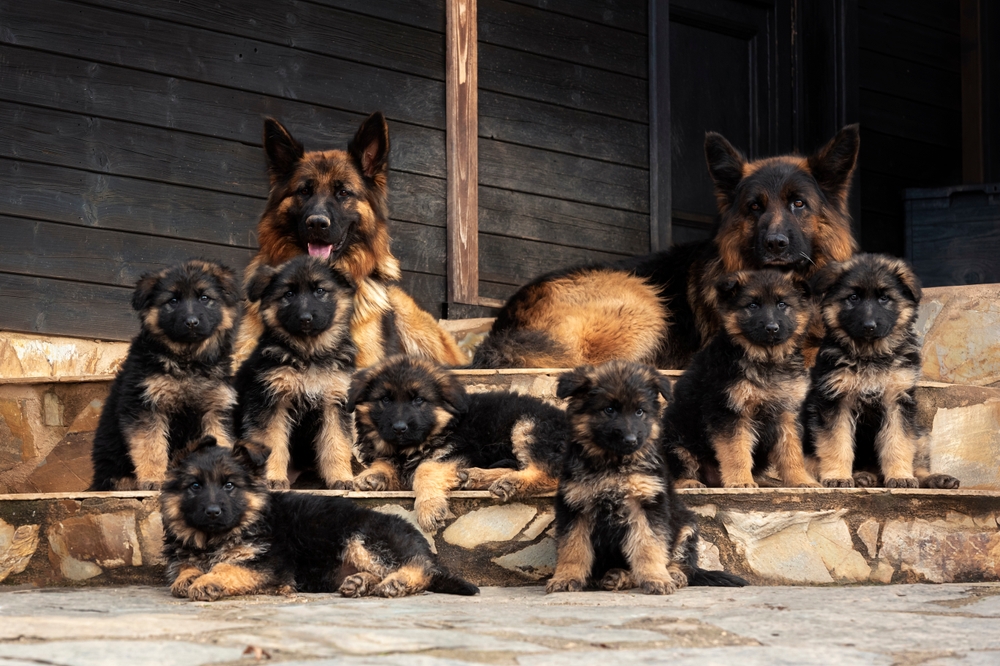
3. Temperament Testing
If you are looking to adopt a GSD from another owner or animal shelter, ask if the dog has been temperament tested. This process assesses how the dog reacts in certain situations and with a range of different people and animals.
4. Regular Vet Check-Ups
As you have no doubt realized, many of the health issues seen in the GSD require an early diagnosis for treatment and management to be successful, making an annual health check an essential part of their basic care. Your vet may be able to detect changes or signs that are not so obvious to us, giving our dogs the best chance at a long and healthy life.
Did you know you can speak to a veterinarian without having to travel? Just head over to PangoVet. It's our online service where you can talk to a vet online and get the advice you need for your pet — all at an affordable price!

5. Training, Exercise, and Play
Like all dogs, the GSD requires strict training and socialization from a young age to ensure they are able to get out and about in the world, mixing with different people and dogs. The male GSD, in particular, will often go through a rather tumultuous adolescence, so patience and perseverance will be essential but well worth it.
An unruly, untrained GSD can become an unmanageable and dangerous one, so it is vital that you stay on top of their training, exercise, and mental stimulation, and seek help and advice when needed.
6. Selecting Breeding Individuals With Minimal or No Health Problems
Making use of genetic testing to eliminate degenerative myelopathy, as well as only breeding from dogs with good conformation, health, and mobility, are the best ways to ensure the future health of the breed. By only adopting puppies from breeders that are using these screening methods, you can be a part of that process.
As a general rule, dogs that come from a working lineage tend to be healthier than those bred for showing or as pets because they need to be. As you can imagine, dogs with joint and mobility problems or those in need of specialized diets, daily medications, or eye drops are not going to be the most suitable candidates for military or police work. Physical fitness, trainability, and performance are the traits favored by these lines, and while the overall popularity of the German Shepherd breed has declined over the years, we are seeing more of the working-type dogs making their way into family homes.
Although the more outgoing nature of these dogs requires strong leadership and training, their loyalty and love for humans make them fantastic companions and pets.

Final Thoughts
Although you may be thinking that these 14 health issues are a lot for one breed, there are ways to reduce the risks for your individual dog and to help in the quest to improve the overall genetics of this wonderful breed. While they may have a reputation for being fearsome guard dogs, the German Shepherd is a highly trainable, eager-to-please, and loving dog that will follow you to the end of the Earth. As a known “velcro dog,” with a German Shepherd in your house, you will always have a front door guard and an eager running buddy, and you will never have to worry about going to the bathroom alone!
Featured Image Credit: DasyaDasya, Shutterstock


